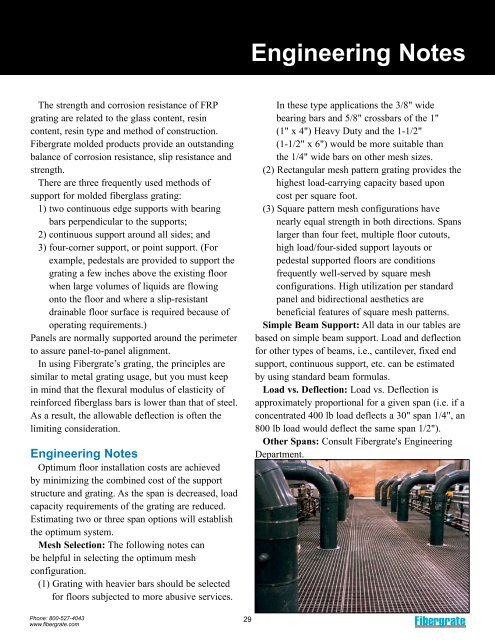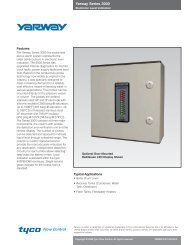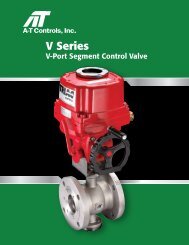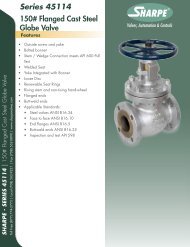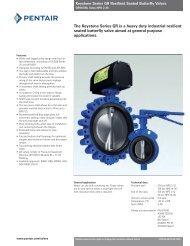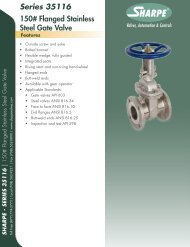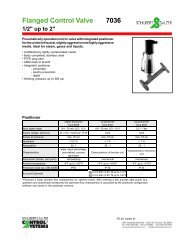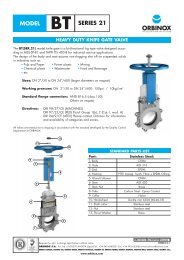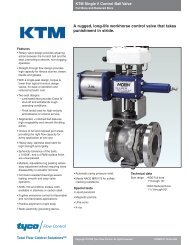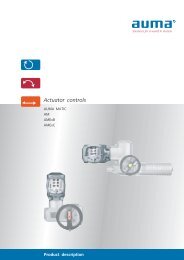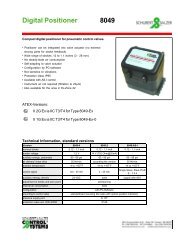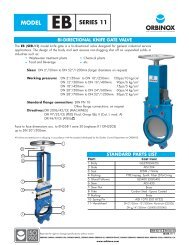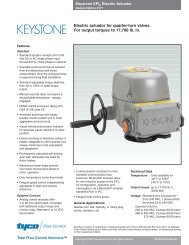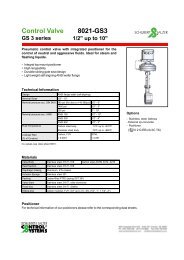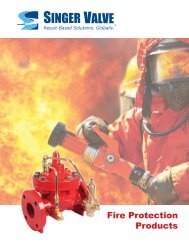Fiberglass Molded Products - Grating Pacific
Fiberglass Molded Products - Grating Pacific
Fiberglass Molded Products - Grating Pacific
You also want an ePaper? Increase the reach of your titles
YUMPU automatically turns print PDFs into web optimized ePapers that Google loves.
Engineering Notes<br />
The strength and corrosion resistance of FRP<br />
grating are related to the glass content, resin<br />
content, resin type and method of construction.<br />
Fibergrate molded products provide an outstanding<br />
balance of corrosion resistance, slip resistance and<br />
strength.<br />
There are three frequently used methods of<br />
support for molded fiberglass grating:<br />
1) two continuous edge supports with bearing<br />
bars perpendicular to the supports;<br />
2) continuous support around all sides; and<br />
3) four-corner support, or point support. (For<br />
example, pedestals are provided to support the<br />
grating a few inches above the existing floor<br />
when large volumes of liquids are flowing<br />
onto the floor and where a slip-resistant<br />
drainable floor surface is required because of<br />
operating requirements.)<br />
Panels are normally supported around the perimeter<br />
to assure panel-to-panel alignment.<br />
In using Fibergrate’s grating, the principles are<br />
similar to metal grating usage, but you must keep<br />
in mind that the flexural modulus of elasticity of<br />
reinforced fiberglass bars is lower than that of steel.<br />
As a result, the allowable deflection is often the<br />
limiting consideration.<br />
Engineering Notes<br />
Optimum floor installation costs are achieved<br />
by minimizing the combined cost of the support<br />
structure and grating. As the span is decreased, load<br />
capacity requirements of the grating are reduced.<br />
Estimating two or three span options will establish<br />
the optimum system.<br />
Mesh Selection: The following notes can<br />
be helpful in selecting the optimum mesh<br />
configuration.<br />
(1) <strong>Grating</strong> with heavier bars should be selected<br />
for floors subjected to more abusive services.<br />
In these type applications the 3/8" wide<br />
bearing bars and 5/8" crossbars of the 1"<br />
(1" x 4") Heavy Duty and the 1-1/2"<br />
(1-1/2" x 6") would be more suitable than<br />
the 1/4" wide bars on other mesh sizes.<br />
(2) Rectangular mesh pattern grating provides the<br />
highest load-carrying capacity based upon<br />
cost per square foot.<br />
(3) Square pattern mesh configurations have<br />
nearly equal strength in both directions. Spans<br />
larger than four feet, multiple floor cutouts,<br />
high load/four-sided support layouts or<br />
pedestal supported floors are conditions<br />
frequently well-served by square mesh<br />
configurations. High utilization per standard<br />
panel and bidirectional aesthetics are<br />
beneficial features of square mesh patterns.<br />
Simple Beam Support: All data in our tables are<br />
based on simple beam support. Load and deflection<br />
for other types of beams, i.e., cantilever, fixed end<br />
support, continuous support, etc. can be estimated<br />
by using standard beam formulas.<br />
Load vs. Deflection: Load vs. Deflection is<br />
approximately proportional for a given span (i.e. if a<br />
concentrated 400 lb load deflects a 30" span 1/4", an<br />
800 lb load would deflect the same span 1/2").<br />
Other Spans: Consult Fibergrate's Engineering<br />
Department.<br />
Phone: 800-527-4043 29<br />
www.fibergrate.com


